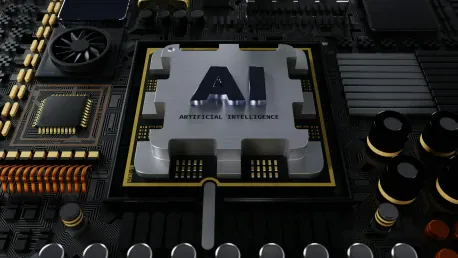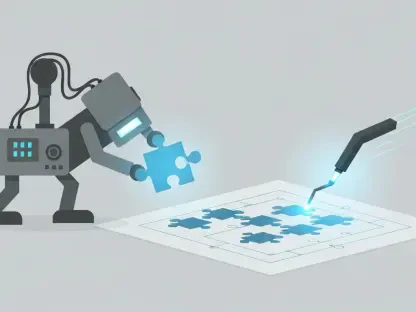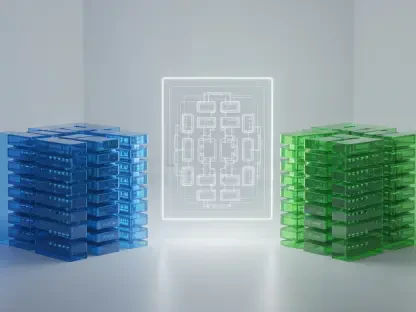The rapid advancement of artificial intelligence (AI) has significantly transformed numerous fields, and one of the standout areas benefiting from these advancements is Automated Program Repair (APR). From early, rudimentary methods to current systems powered by complex language models, AI has revolutionized how developers address software bugs.
The Evolution of Automated Program Repair
Early Methods: Template-Based Repairs
Early APR systems like GenProg marked the initial innovative steps in automated bug fixing by relying on predefined templates. GenProg and similar systems aimed to address basic coding errors automatically. These systems leveraged a set of predefined transformation rules designed to handle common issues such as null pointer exceptions and array bounds validation. The intention behind template-based repairs was to provide a rapid solution to frequently encountered coding problems without extensive manual intervention.
However, despite the creativity involved in their development, template-based systems revealed substantial limitations over time. Flexibility was one of the most significant drawbacks, as these methods could only handle bugs that matched their predefined patterns. Moreover, the computational cost associated with these systems was often prohibitive, making them inefficient for practical use. The high complexity and dynamic nature of modern codebases further exacerbated these issues, limiting the effectiveness of these early APR systems in real-world scenarios.
Limitations Revealed
The practical application of template-based methods frequently highlighted their shortcomings. For instance, when employed to repair the React codebase at Facebook, these early APR systems were unable to adapt to the codebase’s evolving complexities and quirks. Similarly, the application to the Apache Commons library demonstrated that generating patches for even modest functions could take an undesirable amount of time. These real-world challenges revealed the inefficiency and lack of adaptability inherent in template-based approaches, underscoring the need for more advanced and responsive systems capable of handling a broader range of issues with greater efficiency.
Breakthroughs with Large Language Models
Introduction of LLMs
The introduction of large language models (LLMs) such as GPT-4, Code Llama, DeepSeek Coder, and Qwen2.5 Coder brought a paradigm shift in the field of automated bug fixing. These models represent a significant leap forward because they are designed to understand not just the syntax but also the semantic context of code. Unlike their predecessors, LLMs offer capabilities such as context-aware reasoning, robust code generation, and pattern recognition from extensive datasets of code. This allows for more accurate, relevant, and effective fixes to a broader variety of coding problems.
Each LLM, with its unique strengths and attributes, caters to different sections of the software development landscape. For instance, GPT-4’s advanced reasoning and code generation make it highly suitable for intricate enterprise projects demanding precision. On the other hand, Code Llama is favored within communities that thrive on open-source collaboration and require high customization. The versatility of these models underscores the adaptability and range of modern APR solutions, facilitating their application across various development environments and project scales.
Enhanced Capabilities
The enhanced capabilities of LLMs lie in their ability to understand the relationships between different parts of the code and generate contextually appropriate fixes. These models are equipped with natural language understanding (NLU), bridging the gap between technical problem statements and actionable code repairs. This is particularly crucial as it allows the models to handle multifaceted issues that go beyond simple bug patterns. Moreover, LLMs continually learn and improve from vast repositories of code, recognizing and internalizing common bug patterns, which enhances their repair accuracy over time.
Qwen2.5 Coder, for example, excels in providing robust support for projects requiring multilingual programming, making it ideal for international teams working on diverse codebases. DeepSeek, on the other hand, balances accuracy and cost-effectiveness, proving beneficial for small to medium-sized teams that require rapid iterations. These advancements illustrate the strides made in creating APR systems that are not only powerful but also tailored to meet the specific needs of various development contexts. Consequently, AI-driven APR has evolved into a versatile tool integral to modern software engineering practices.
Modern APR Systems: Diverse Approaches
Agent-Based Systems
Agent-based systems have taken the lead in modern APR techniques by leveraging multiple agents for collaborative debugging tasks. These systems assign specific roles to different agents, such as fault localization, semantic analysis, and validation, each contributing to the repair process from its unique vantage point. Notable examples of agent-based systems include SWE-Agent, CODEAGENT, AgentCoder, and SWE-Search, each employing distinct techniques to enhance debugging efficiency.
For instance, SWE-Agent is designed for large-scale repository debugging, adeptly handling cross-repository dependencies. This specialization makes it particularly effective in environments with complex, interconnected codebases. CODEAGENT integrates LLMs with external static analysis tools, optimizing collaborative debugging to deliver more precise and efficient repairs. AgentCoder provides an end-to-end modular solution for a range of software engineering tasks, highlighting the modularity and adaptability of agent-based APR systems. SWE-Search, using Monte Carlo Tree Search (MCTS) for adaptive path exploration, showcases substantial progress with a notable 23% improvement in efficiency over standard agents.
Agentless Systems
Streamlining APR by eliminating coordination overhead, agentless systems have carved a niche for themselves by adopting a structured three-stage process. The first stage, hierarchical localization, involves identifying problematic files, classes, functions, and lines of code. This stage sets the foundation for the subsequent repair efforts. The second stage, contextual repair, focuses on generating potential patches with precise code alterations. Finally, the validation stage involves testing the patches using innovative methods such as reproduction tests, regression tests, and reranking methods to ensure the fixes are both accurate and effective.
DeepSeek Coder exemplifies the effectiveness of agentless systems through its repository-level pre-training approach. Unlike systems operating at a file level, DeepSeek understands cross-file relations and project structures through an advanced dependency parsing algorithm. This comprehensive grasp of the entire codebase enables DeepSeek to achieve impressive accuracy benchmarks, making it a valuable tool for developers seeking high-precision repairs without the complexities associated with multi-agent coordination.
Retrieval-Augmented Systems
The retrieval-augmented generation (RAG) approach combines the strengths of retrieval mechanisms with LLM-based code generation to enhance debugging accuracy. Systems like CodeRAG leverage contextual information from sources such as GitHub repositories, documentation, and programming forums. This integration of various contextual data sources enables RAG systems to pull relevant information that aids in generating more informed and precise fixes.
Key features of retrieval-augmented systems include contextual retrieval, which extracts pertinent insights from external knowledge sources, and adaptive debugging, allowing for repairs that involve domain expertise or external API integration. These systems also employ execution-based validation to ensure functional correctness within controlled testing environments. By blending retrieval and generation mechanisms, RAG systems tackle domain-specific issues more effectively, presenting a sophisticated solution for complex debugging scenarios that require extensive background knowledge.
Evaluating Performance and Overcoming Challenges
Benchmarking APR Systems
Efficient evaluation of APR systems requires meticulous benchmarking to assess various performance dimensions, such as bug-fix accuracy, efficiency, scalability, code quality, and adaptability. Several benchmarks provide insights into how well these systems perform under real-world debugging tasks. For instance, SWE-Bench tests APR capabilities on real GitHub defects across 12 widely-used Python repositories, focusing on delivering deep analysis and high accuracy in code edits.
CODEAGENTBENCH serves as an extension of SWE-Bench, specifically targeting multi-agent frameworks and repository-level debugging capabilities. This benchmark evaluates dynamic tool integration, agent collaboration, and the ability to handle complex test cases involving multi-file challenges. Similarly, CodeRAG-Bench specializes in evaluating retrieval-augmented systems, measuring how effectively these systems incorporate contextual information from diverse sources to address complex bugs. These benchmarks are crucial for developers to understand the strengths and weaknesses of different APR systems and choose the one best suited for their needs.
Current Challenges
Despite significant advancements, APR systems continue to face several challenges that need addressing to fully realize their potential. One major challenge is the limited context windows, which constrain the systems’ ability to handle large codebases comprising thousands of files. This limitation affects the scope and accuracy of the generated repairs. Additionally, while LLMs have improved code generation, multi-line or multi-file edits still show a higher error rate due to the lack of precise context sensitivity.
Computational expense remains another significant hurdle, especially for real-time, large-scale debugging tasks. The high computational resources required for such tasks can make the process impractical for many development teams. Furthermore, current benchmarks often fall short of capturing the full complexity of real-world scenarios, leaving gaps in validation and performance assessment. Addressing these challenges through continued research and development is pivotal for enhancing the accuracy, efficiency, and scalability of APR systems.
Industry Impact and Practical Benefits
Real-World Applications
The integration of APR into industry workflows has delivered substantial benefits across various facets of software development. One of the notable applications is automated version management, where APR helps detect and fix compatibility issues during software upgrades. By automating this process, developers can ensure more stable and seamless transitions between different software versions, reducing manual workloads and minimizing human error.
Another significant application area is security vulnerability remediation. APR systems expedite the identification and patching of security vulnerabilities, enhancing the overall security posture of software applications. Additionally, APR aids in test generation by creating unit tests for uncovered code paths and integration tests for complex workflows. These automated tests help improve code coverage and ensure that software functions as expected, ultimately leading to higher software quality and reliability.
Improved Productivity and Software Quality
Organizations that have adopted APR tools report notable improvements in their software development processes. For instance, the use of these tools has led to a dramatic reduction in the time required to fix common problems compared to manual debugging. Companies have experienced a 60% reduction in debugging time, allowing developers to focus on more critical tasks. Additionally, APR tools have led to a 40% increase in test coverage, ensuring that a larger portion of the codebase is thoroughly tested and verified.
Moreover, the automation provided by APR tools has resulted in a 30% reduction in regression bugs, a significant improvement that enhances the overall stability and reliability of software applications. Renowned organizations such as Google, Microsoft, and Facebook have already incorporated APR tools into their workflows, reaping the benefits of AI-driven automated bug fixing. For example, Google’s Gemini Code Assist reports a 40% reduction in time for routine developer tasks, while Microsoft’s IntelliCode provides context-aware code suggestions. Facebook’s SapFix has automated the patching of bugs in production environments, setting a benchmark for other companies to follow.
The Future of AI-Driven APR Systems
The rapid progression of artificial intelligence (AI) has immensely influenced various sectors, with Automated Program Repair (APR) being a notable beneficiary. From basic, simplistic approaches in the past, today’s systems, driven by sophisticated language models, have brought a revolutionary change to how software bugs are managed and resolved. This dynamic shift has empowered developers to address and fix errors in code more efficiently and accurately than ever before. AI-powered APR has transformed a previously tedious and time-consuming task into a much more streamlined process, enabling quicker development cycles and more reliable software performance. This advancement not only improves the efficiency of developers but also significantly contributes to the overall quality of software systems, ensuring that they run more smoothly and effectively. As AI continues to evolve, its role in augmenting the capabilities of APR will likely expand, further enhancing its impact on software development and maintenance.









